Reading comprehension Normal Vowels and Consonants Worksheets for Ages 5-9
11 filtered results
-
From - To
Introduce your young learners to the fundamentals of reading with our "Reading Comprehension Normal Vowels and Consonants Worksheets for Ages 5-9". These engaging and educational worksheets are designed to strengthen the understanding of vowels and consonants, helping kids build essential reading skills. Suitable for children aged 5-9, our printable activities make learning fun through age-appropriate content that bolsters reading comprehension. Kids will enjoy mastering the basics of the alphabet while expanding their vocabulary and phonics skills. Ideal for both classroom use and at-home practice, these worksheets will foster a lifelong love for reading. Download now and watch your young readers flourish!
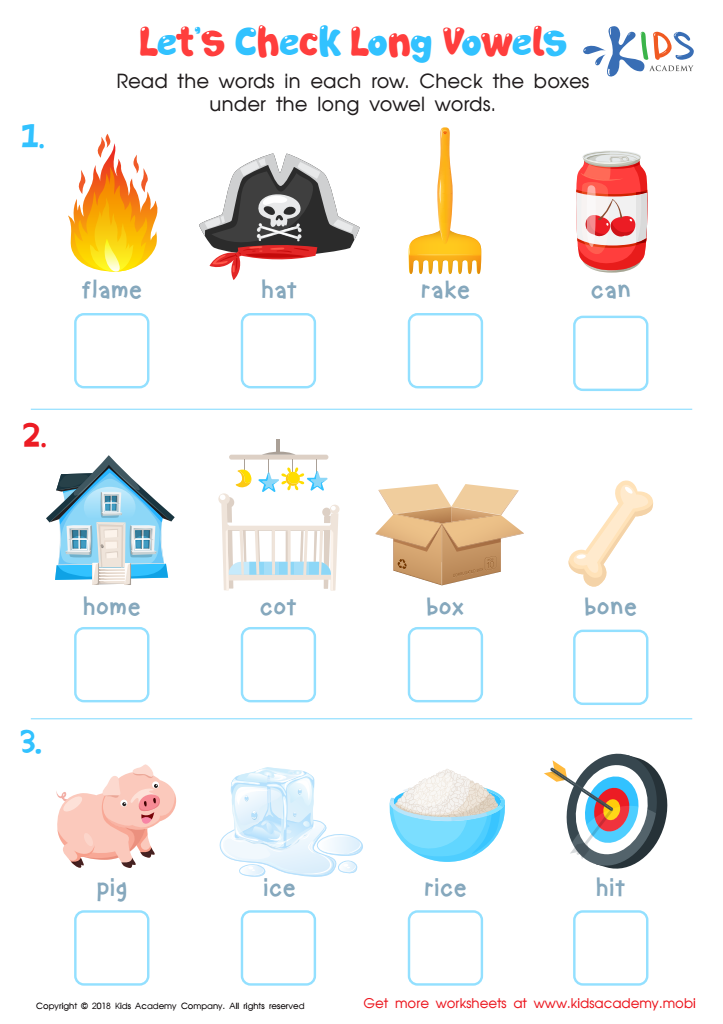

Let's Check Long Vowels: Assessment Worksheet


short vowels Worksheet
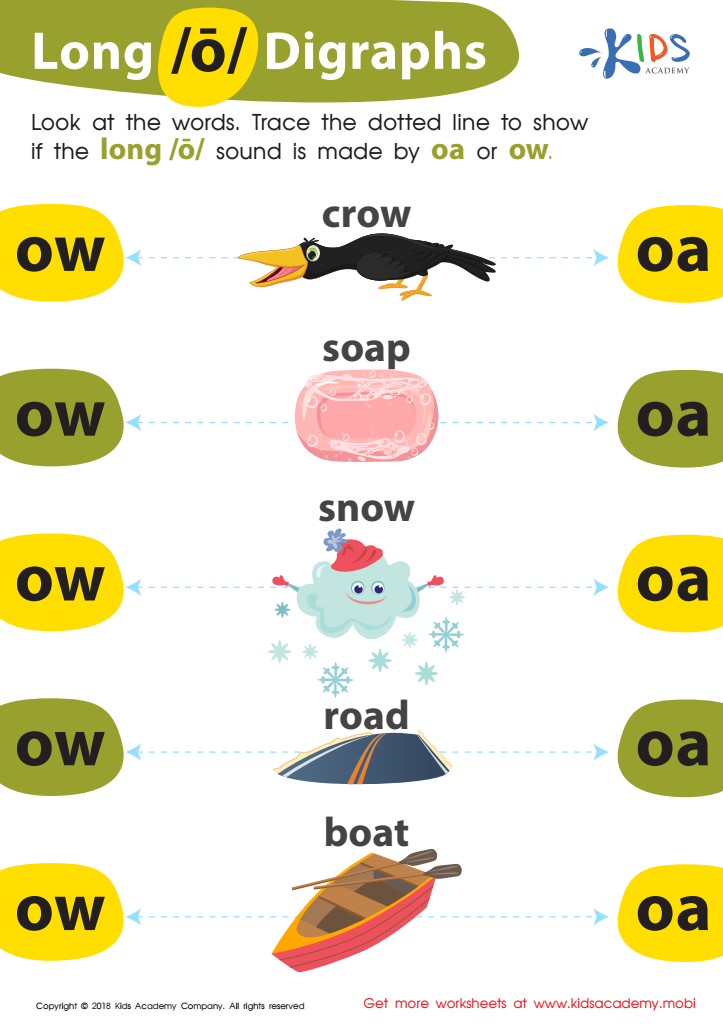

Reading: Long O Digraphs Worksheet
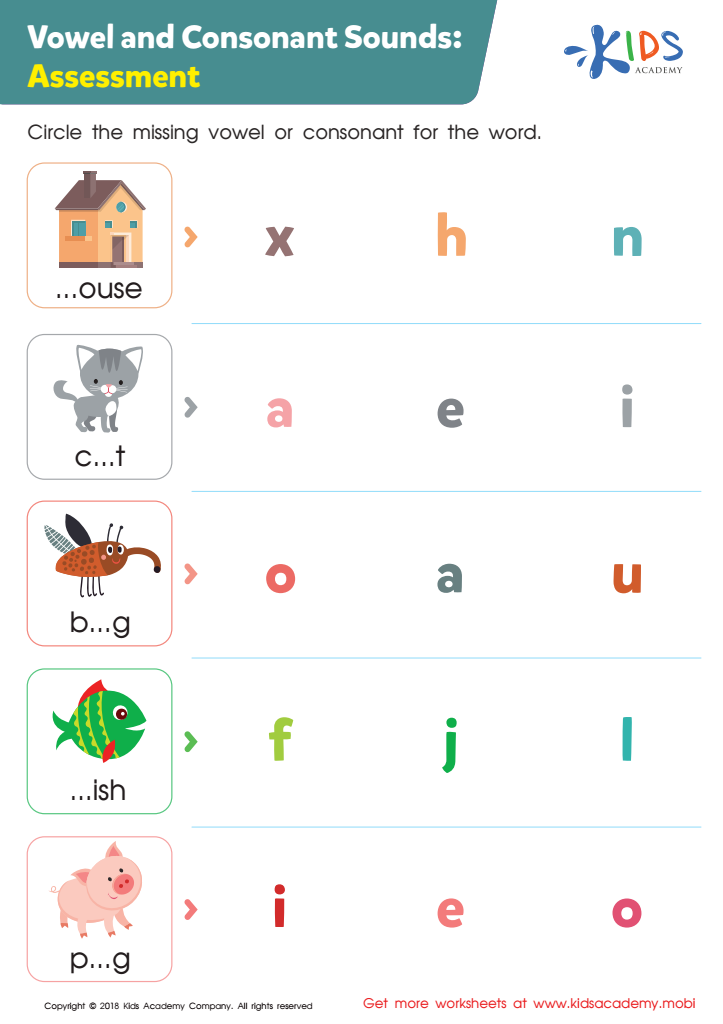

Vowel and Consonant Sounds: Assessment Worksheet


Short Vowels /e/, /i/, and /u/ Worksheet
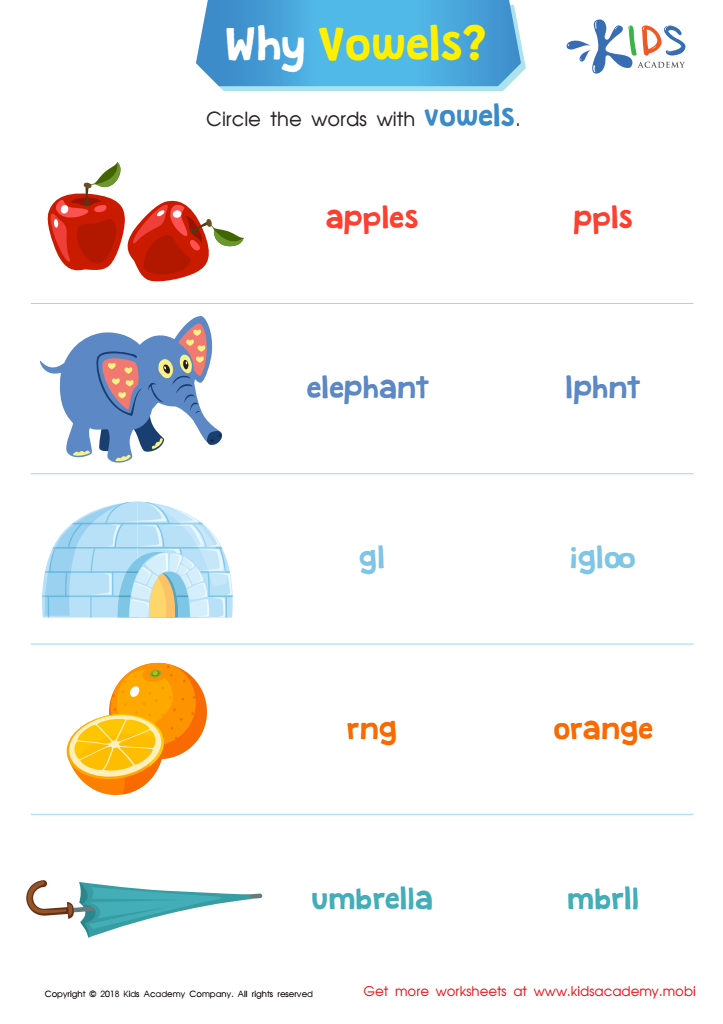

Why Vowels? Reading Worksheet
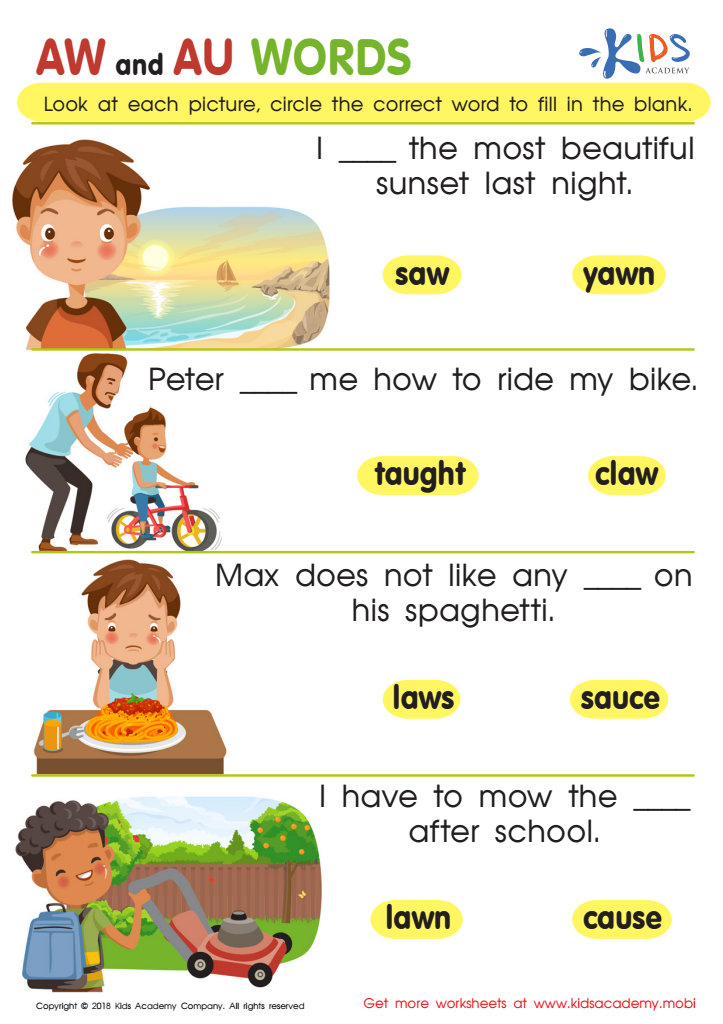

Reading: AW and AU Words Worksheet
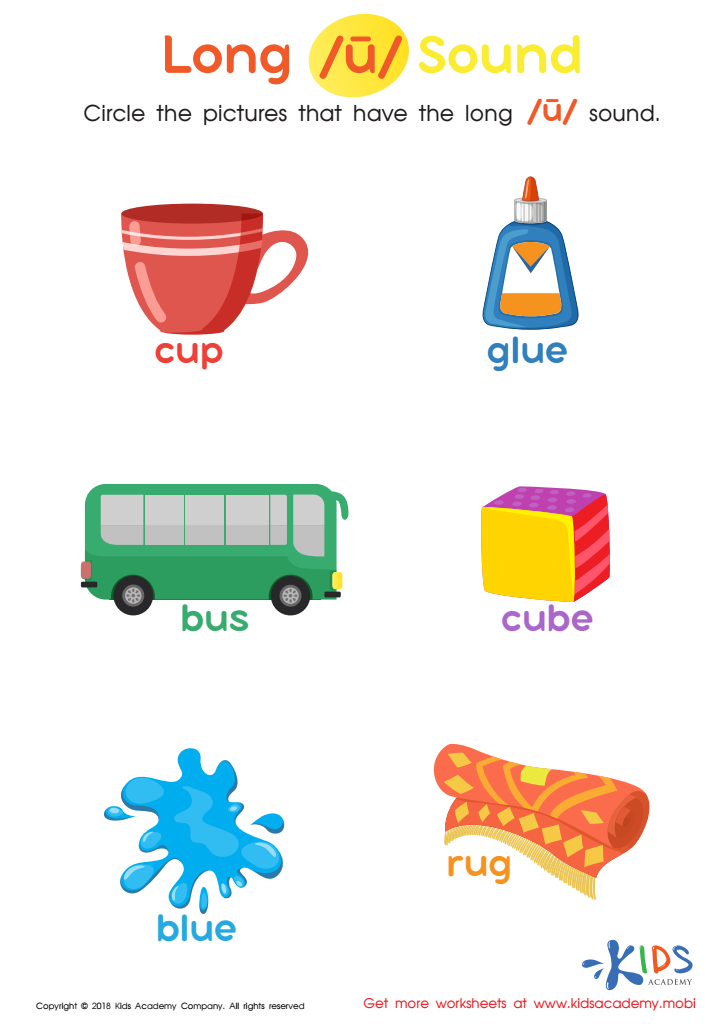

Long «u» Sound Worksheet
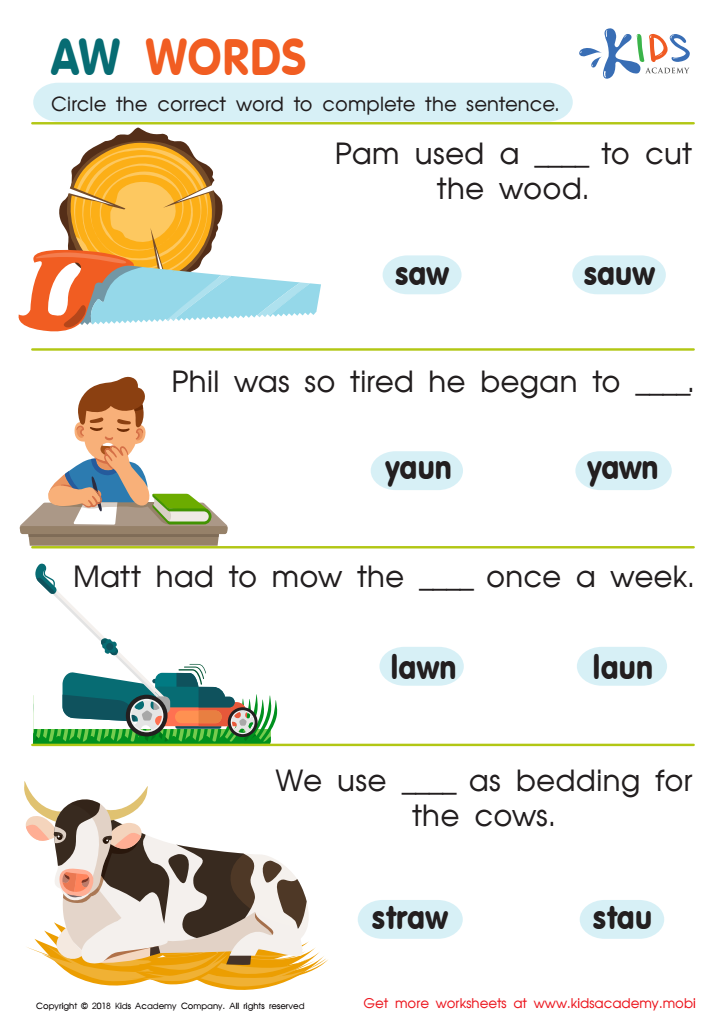

Reading: AW Words Worksheet
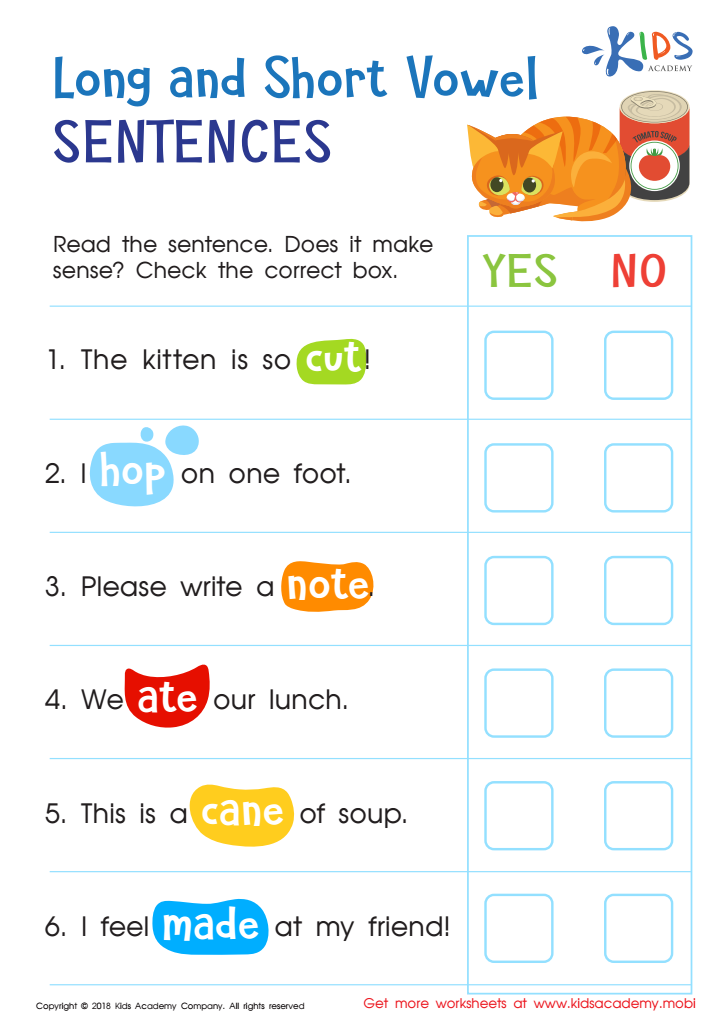

Long and Short Vowel Sentences: Assessment Worksheet
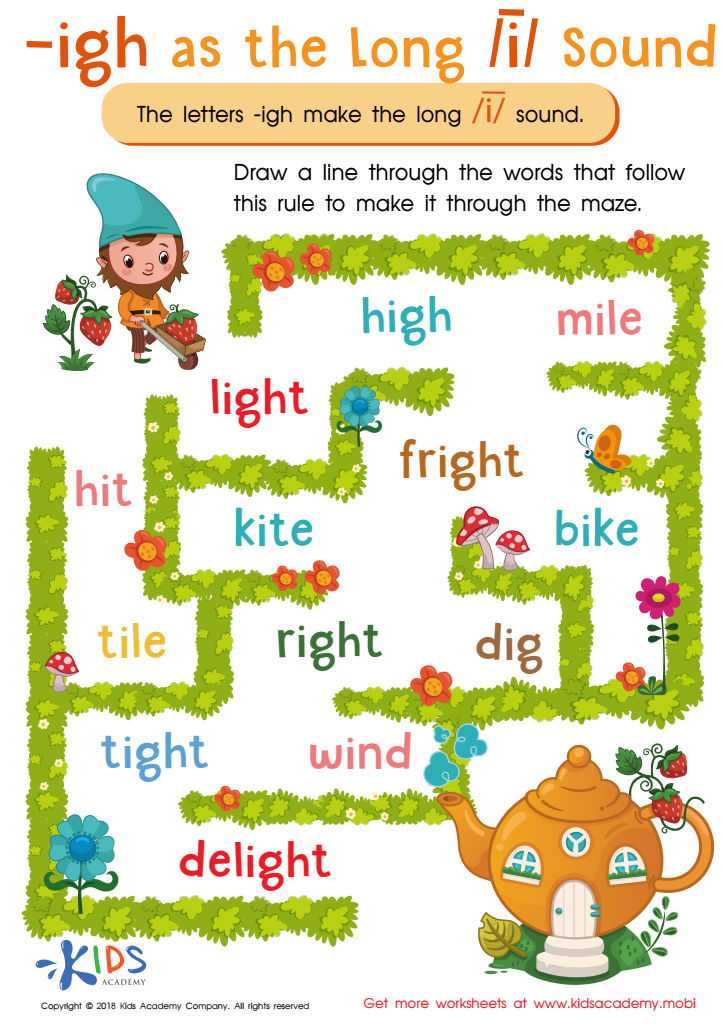

Reading: IGH as Long I Worksheet
Parents and teachers should prioritize children's understanding of reading comprehension, normal vowels, and consonants because these skills are foundational for literacy development, especially between the crucial ages of 5-9. This period marks significant cognitive and language growth, and mastering these basic elements of phonetics and reading sets the stage for future academic success.
Reading comprehension is not just about decoding words; it’s about understanding and interpreting meaning, fostering a love for reading, and developing critical thinking skills. When children grasp normal vowels and consonants, they can more easily decode new words, facilitating smoother, more fluent reading. This fluency allows them to focus more on comprehending the text, rather than expending their mental energy on struggling to recognize words.
Further, strong foundational skills in reading and phonetics are directly linked with other academic areas, including writing, mathematics, and even social studies. They enhance a child’s ability to follow instructions, understand problems, and express ideas clearly. Encouraging and supporting reading comprehension and phonetic skills during these early years contributes to a child’s confidence and motivation to learn, thus positioning them for a lifetime of educational achievement and curiosity.
In essence, investing attention and resources into these fundamental areas during the early grades paves the way for more comprehensive, deeper learning and overall scholastic success.
 Assign to My Students
Assign to My Students














